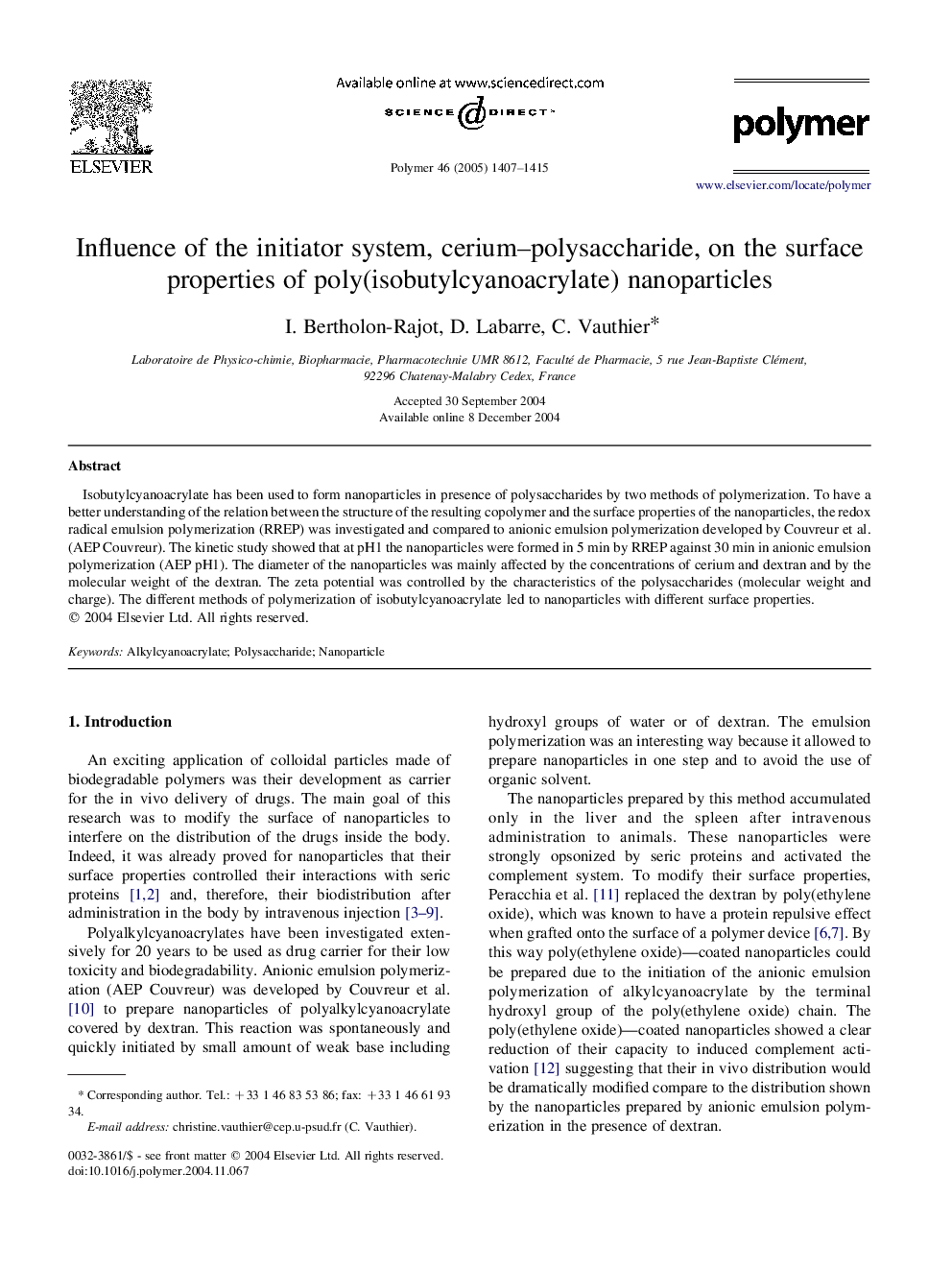| Article ID | Journal | Published Year | Pages | File Type |
|---|---|---|---|---|
| 9559300 | Polymer | 2005 | 9 Pages |
Abstract
Isobutylcyanoacrylate has been used to form nanoparticles in presence of polysaccharides by two methods of polymerization. To have a better understanding of the relation between the structure of the resulting copolymer and the surface properties of the nanoparticles, the redox radical emulsion polymerization (RREP) was investigated and compared to anionic emulsion polymerization developed by Couvreur et al. (AEP Couvreur). The kinetic study showed that at pH1 the nanoparticles were formed in 5Â min by RREP against 30Â min in anionic emulsion polymerization (AEP pH1). The diameter of the nanoparticles was mainly affected by the concentrations of cerium and dextran and by the molecular weight of the dextran. The zeta potential was controlled by the characteristics of the polysaccharides (molecular weight and charge). The different methods of polymerization of isobutylcyanoacrylate led to nanoparticles with different surface properties.
Related Topics
Physical Sciences and Engineering
Chemistry
Organic Chemistry
Authors
I. Bertholon-Rajot, D. Labarre, C. Vauthier,
